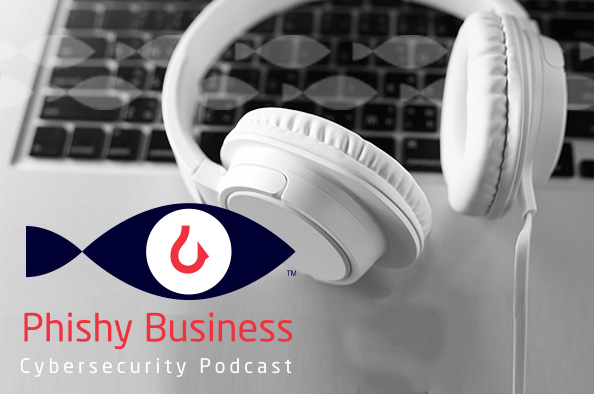Spam Bots - Introduction
Spam is an issue that anyone who spends time online deals with on a daily basis—whether through email, social media, messaging apps, or forums. At their least damaging, they are a nuisance, usually advertisements or harmless links, but at their most, they can spread malware and create fake user accounts.
But what is a spam bot, and how does it work? Our guide explains everything you need to know about spam bots and how your organization can fight against them. Read on to learn more and protect yourself against this common cybersecurity issue.

What are Spam Bots?
As the name suggests, spam bots are automated software programs designed to send out many spam messages or unwanted communications through various channels such as email, social media, or instant messaging. Typically, the number of messages sent by a spam bot far outweighs the number a single cybercriminal could send alone.
Spam bots are used for malicious purposes such as phishing scams, spreading malware, or promoting spam products or services, and they can operate in a number of ways including scraping email addresses, harvesting personal information, and using tactics like social engineering to trick users into divulging information.
How Do Spam Bots Work?
Spam bots are, in essence, a type of specialized software that can be programmed to perform specific tasks such as sending emails, posting comments on websites, or sending direct messages on social media platforms. There are many different types of software developed by cybercriminals to achieve this, often with similar goals including email address harvesting, personal information harvesting, social engineering , and spoofing.
Once a spam bot has obtained email addresses or other information, it can use this information to send out large numbers of spam messages, often thousands within a few seconds. These messages can contain links to malicious websites, attachments with malware, or advertisements for spam products or services.
Why Spam Bots are Problematic for Businesses and Individuals
Spam bots are a pernicious threat to daily online life for both businesses and individuals. They cause a number of issues that range from the mundane (inbox overflow) to the highly damaging (malware spread), affecting productivity for workers or stealing sensitive information and everything in between.
Some of the most common issues businesses and individuals face from bot messages include:
- Inbox clutter: Inboxes get inundated with unwanted messages, making it difficult for users to find important or legitimate emails.
- Phishing scams: Bots can be used in phishing scams to trick individuals into providing sensitive information such as passwords, social security numbers, or financial information, which can lead to identity theft or financial loss.
- Spoofing: Forging the senders information in an email to make it appear as if it came from a legitimate source.
- Social engineering: Using tactics such as creating a sense of urgency or offering a reward to trick individuals into clicking on a link or providing information.
- Malware spread: The spread of malware through attachments or links in their messages, potentially compromising the security of a user's device or network.
- Brand damage: Spam bots can send messages promoting spam products or services, which can harm a business's reputation or brand image.
- Resource depletion: Dealing with spam messages can consume a significant amount of time and resources for businesses and individuals, reducing productivity and potentially leading to financial loss.
- Network overload: Spam bots can generate a high volume of traffic, potentially overwhelming a network and causing performance issues.
Any single or combined spam bot attack can have serious immediate and long-term impacts on any individual or business that fails to protect itself sufficiently.
Types of Spam Bots
There are countless pieces of software that act as spam bots, with regular updates from cybercriminals allowing them to stay one step ahead and continue to cause issues. However, some of the main types of spam bots—email, website, and social media—are listed in more detail below.
Email Spam Bots
Email spam bots can send out a high volume of messages at a rapid pace, making it difficult for individuals and businesses to keep up and potentially overwhelming email systems. Generally, they work by harvesting, or scraping email addresses from websites, social media platforms, or other sources, then using this information to send spam messages.
The specific tactics used by email spam bots can vary, but common methods include:
- Spoofing
- Phishing scams
- Malware spread
- Advertisements
- Social engineering
In addition to email scraping, cybercriminals may also look to buy large databases of email addresses from the dark web, skipping the first step and using email spam bots to send malicious emails.
Websites
Website spam bots attack the front end of a website, rapidly posting many links or comments in forums, for example, and potentially compromising the site. In addition, they may be able to take control of automated chatbots used legitimately on the site.
Many website spam messages contain malicious content, such as phishing scams or malware, which can compromise the security of a device or network. Usually, website spam bots aim to do the following:
- Link insertion
- Spoofing
- Advertisements
- Phishing scams
- Malware spread
Social Media
Social media spam bots have become increasingly common as the platforms have grown over the past two decades. Generally, they will create fake accounts designed to post unwanted messages, links, or comments, which can range from advertisements for products or services to phishing scams or links to malicious websites.
However, using credential stuffing, they are also able to take control of existing user accounts, not only spamming the specific social media platform through the hijacked account, but also gaining personal information within the profile, and potentially also the personal details of the user’s contacts.
How to Protect Against Spam Bots
Among the main issues facing cybersecurity professionals (white hat) is the fact that spam bots represent something of an arms race, with cybercriminals (black hat) developing new and more advanced software that white hat developers must find ways to neutralize.
Today, there are several ways to protect against spam bots, and often these solutions are used in combination to ensure more comprehensive protection. Additionally, they may already be part of an organization’s cybersecurity plan designed to deliver security across a network.
The following tools and techniques are commonly in use:
- CAPTCHA or reCAPTCHA: These tools help to verify that a real human is performing the action by asking for a unique code to be entered. Simple bots may not be able to do this, however, more advanced spam bots can.
- Email Validation: Requires users to validate email addresses during the registration process, using email or SMS verification services that require user interaction i.e. clicking an authorized link.
- IP Blocking: Blocks IP addresses known to be used by spam bots.
- Honeypot Technique: Uses hidden fields in forms that bots can fill out, but humans cannot see.
- Limiting Submissions: Limits the number of submissions from a single IP address in a specific time frame. This prevents bots from spamming from a single IP.
- Authentication: Requires user authentication, such as a login, before allowing users to perform certain actions on a site.
- Content Filtering: Uses filters to detect and block spam messages based on their content.
- Spam Reporting: Provides an easy way for users to report spam and flag suspicious activity.
- AI-Spam Detection: Email security solutions featuring AI tools can help users stay ahead of spam bots by continuously learning and recording new attack vectors. Regular Updates: Keeps all software and security measures up to date to stay ahead of new and evolving spam bots.
Tips for Identifying Spam Bots
Generally, if you have been a victim of a spam bot, the signs are evident. However, the following tips for identifying bot activity are useful to keep in mind if you suspect you have been a victim of a spam bot attack.
- Unusual volume: A sudden and large increase in the volume of traffic or submissions could indicate a bot attack.
- Odd timestamps: If submissions come in at odd hours or at regular intervals, it may be a bot.
- Suspicious IPs: Look for IP addresses that are known to belong to spammers, or that have been associated with suspicious activity in the past.
- Repeat Submissions: Check for submissions that are identical or very similar, especially if they come from different IP addresses.
- Inconsistent information: Check for inconsistencies in user-submitted information, such as mismatched email and IP addresses.
- Irrelevant content: Look for submissions that contain irrelevant or nonsensical content, or that include links to suspicious websites.
- Inconsistent behavior: Watch for unusual or inconsistent behavior, such as rapid clicking or scrolling, or entering information in an unusual order.
- Human-like language: Use language models to detect bot-generated text that is meant to look like it was written by a human.
- Utilizing Analytics: Monitor website analytics for unusual patterns, such as a spike in traffic from a specific geographic location or IP range.
What to Do if You are Attacked by a Spam Bot
If you are the victim of a spam bot attack, the first thing you should do is to block the IP address that the attack came from if you are able to identify it. A firewall or other website security tools should be able to achieve this instantly. Next, you should remove all spam from the website, page, or email inbox, flagging it as spam where possible to alert service providers, hosting sites, or domain registrars.
After you have dealt with the immediate issues relating to the spam bot attack, you should review and update your security measures to minimize further attacks. This may include integrating the tools and techniques previously mentioned in this article or enabling two-factor authentication where appropriate.
Finally, regularly monitoring and backing up your website will allow you to quickly identify and deal with attacks, as well as minimize data loss or corruption through instant backups. In addition to this, staying up to date with the latest spam bot threats and known vulnerabilities is highly important when dealing with ever-evolving attacks.
Spam Bot Protection with Mimecast
While spam bots are an issue across social media and website forums, email remains the number one attack vector for this type of cybersecurity threat. Email Security & Resilience is therefore highly important and finding a solution that meets your organization's specific needs is the most efficient way to ensure protection.
Mimecast offers best-in-class email security with total deployment flexibility that protects your organizations accounts from all types of email attack. Featuring AI-powered security tools, URL protection blocks, attachment safeguards, and impersonation protection, along with comprehensive employee training to minimize human error, Mimecast helps you stay one step ahead of spam bots regardless of their sophistication.
Final Words: Spam Bots
While for many individuals, spam is just a relatively harmless annoyance that is often simply ignored, for organizations, it has the potential to be particularly damaging if allowed to get out of control. Not only is there the risk of malware and other dangerous software entering your network, but the effect of spam can have a particularly detrimental effect on your brand and reputation.
Contact us today to discuss how to protect against spam bots and avoid the damaging potential of this particular threat. Additionally, explore our blog today and learn more about email security and the current cybersecurity landscape.



